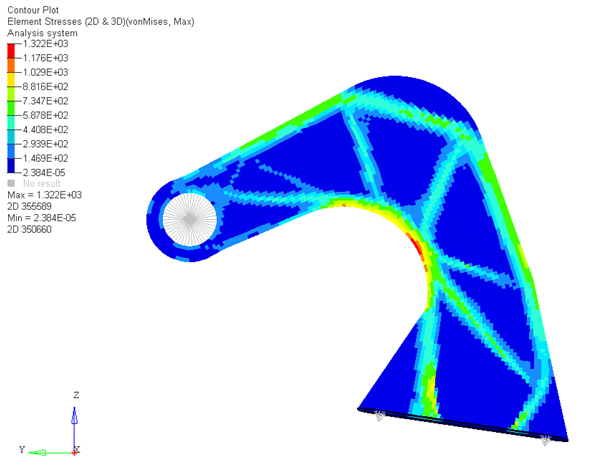OS-T: 2080 Hook with Stress Constraints
In this tutorial you will perform a topology optimization on a bracket-hook modeled with shell elements.
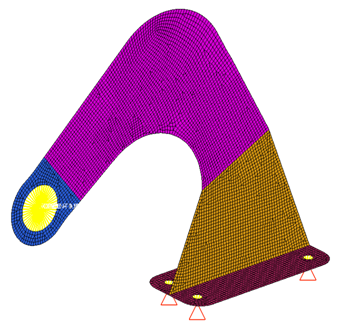
Figure 1. Structural Model with Loads and Constraints
The structural model is loaded into HyperMesh Desktop. The constraints, loads, subcases and material properties are already defined in the model. The topology design variables and the optimization problem setup will be defined using HyperMesh, and OptiStruct is used to determine the optimal material layout. The results can then be reviewed in HyperView.
- Objective Function
- Minimize mass.
- Constraints
- Minimum Member Size = 1.0
- Design Variables
- The density of each element in the design space.
Launch HyperMesh and Set the OptiStruct User Profile
Import the Model
Set Up the Optimization
Set the View
- In the Model Browser, right-click on Components and select Isolate Only from the context menu.
-
From the Standard Views toolbar, click
 to fit the model to the
screen.
to fit the model to the
screen.
Create Topology Design Variables
In this step you will set the optimization to optimize the shell elements in the Design and Base components to create structural members with minimum member size of 1.0 unit in width with thicknesses that vary between zero and the thickness of the shell. The optimization will use 1000 as the maximum stress for any element within the design region when validating the design.
- From the Analysis page, click optimization.
- Click topology.
- Select the create subpanel.
- In the desvar= field, enter shells.
- Set type: to PSHELL.
- Using the props selector, select Design and Base.
- Click create.
-
Update the design variable's parameters.
- Select the parameters subpanel.
- Toggle minmemb off to mindim=, then enter 1.0.
- Under stress constraint, toggle none to stress= and enter 1000.
- Click update.
- Click return.
Create Optimization Responses
- From the Analysis page, click optimization.
- Click Responses.
-
Create the mass response, which is defined for the total volume of the
model.
- In the responses= field, enter mass.
- Below response type, select mass.
- Set regional selection to total and no regionid.
- Click create.
- Click return to go back to the Optimization panel.
Apply Constraints
Define the Objective Function
- Click the objective panel.
- Verify that min is selected.
- Click response= and select mass.
- Click create.
- Click return twice to exit the Optimization panel.
Save the Database
- From the menu bar, click .
- In the Save As dialog, enter frf_response_optimization.hm for the file name and save it to your working directory.
Run the Optimization
View the Results
View the Iso Surface Plot of the Density Results
View the Element Stress Results
You will notice that there are some local regions where the stresses are still high; this is because topology stress constraints should be interpreted as global stress control or global stress target.
 .
.  to open the
to open the 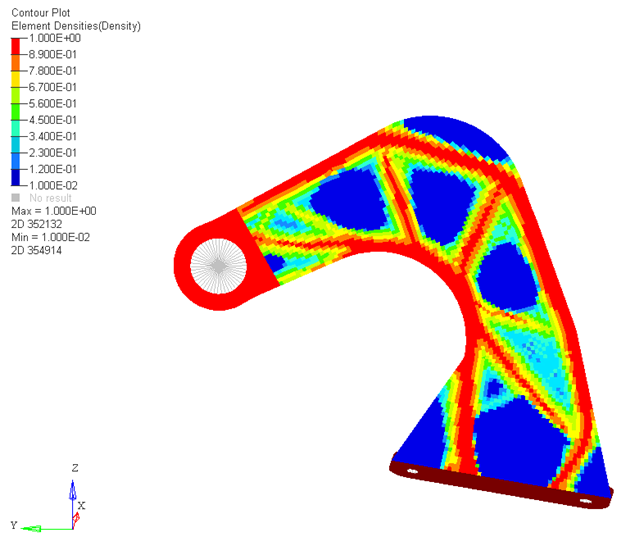
 to open the Iso Value panel.
to open the Iso Value panel.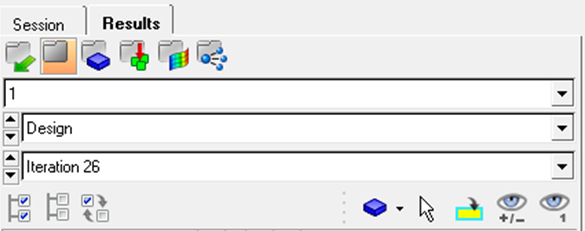
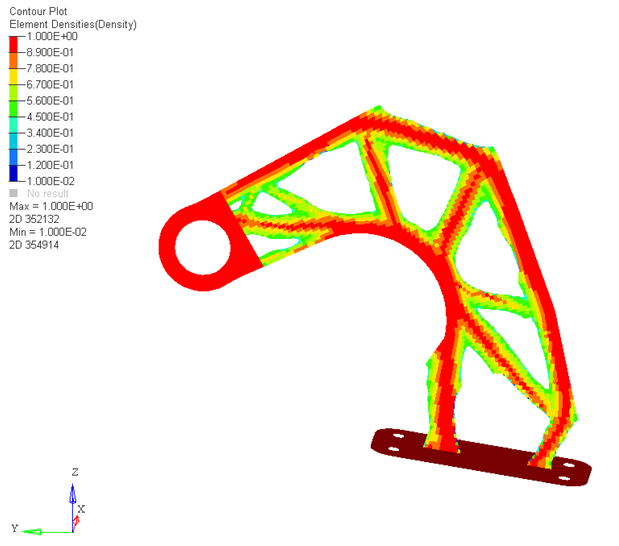
 to move to the page which displays results from the Linear Static Analysis of
Subcase 1.
to move to the page which displays results from the Linear Static Analysis of
Subcase 1.